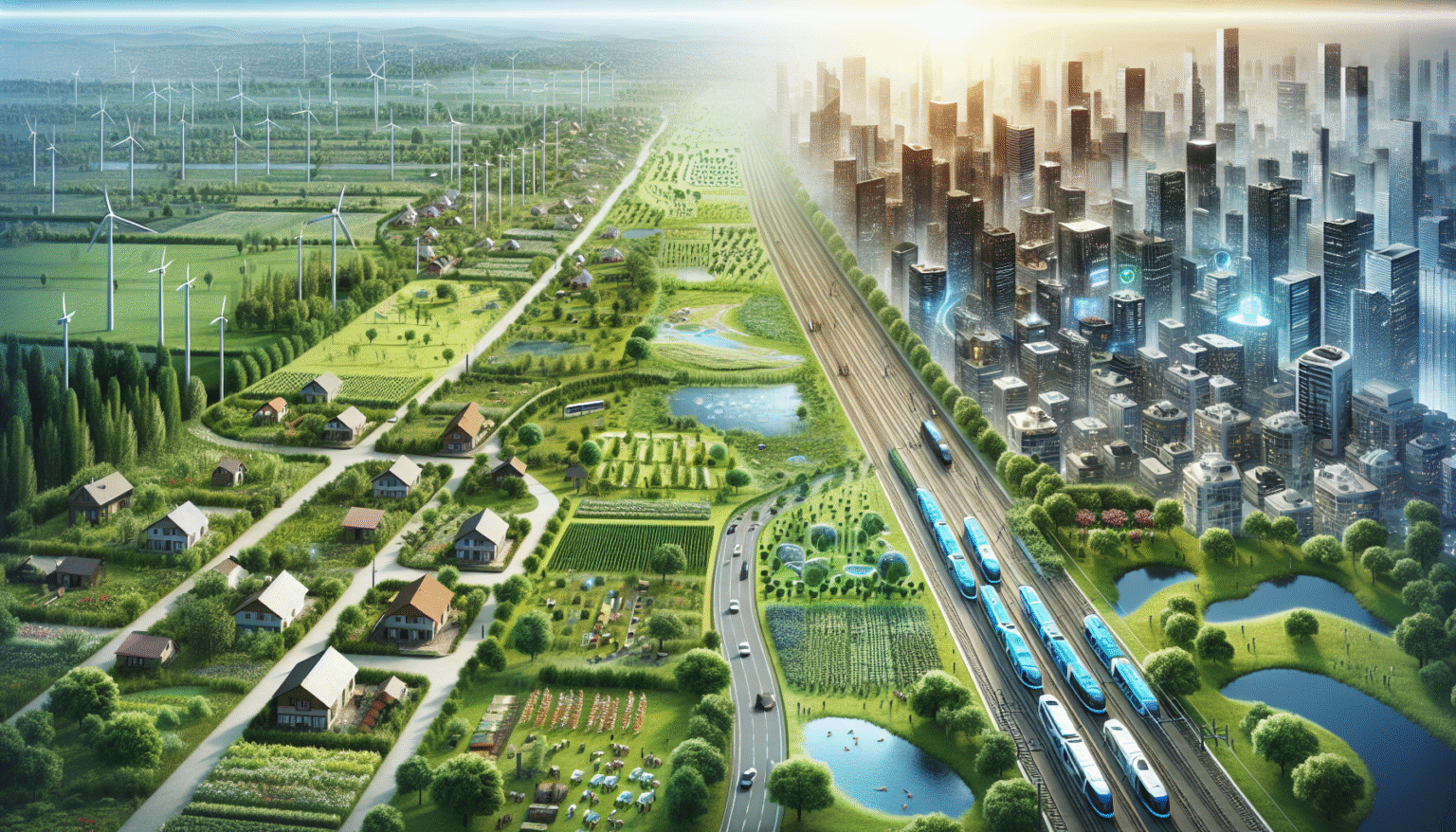Urbanization Trends: Designing Smarter Cities for Tomorrow
Understanding Urbanization
Urbanization refers to the increasing population shift from rural to urban areas, a trend that has reshaped societies over the past century. As of 2023, more than 55% of the world’s population resides in cities, projecting that this figure will exceed 68% by 2050. This rapid urban growth poses significant challenges, including housing shortages, traffic congestion, environmental degradation, and inadequate public services. Addressing these challenges requires innovative strategies and a holistic approach to city planning.
Sustainable Development Goals (SDGs)
The United Nations has established 17 Sustainable Development Goals aimed at fostering sustainable urbanization. Goal 11, “Sustainable Cities and Communities,” emphasizes the need for inclusive, safe, resilient, and sustainable cities. This agenda encourages urban planners and policymakers to focus on sustainability in design, aiming to reduce urban sprawl, maintain green spaces, and promote social equity.
Smart City Initiatives
Smart cities utilize technological innovations to enhance urban living. Internet of Things (IoT) sensors, data analytics, and artificial intelligence play crucial roles in modernizing infrastructure, improving public services, and fostering community engagement. For instance, smart traffic management systems adapt signal timings based on real-time data, reducing congestion and air pollution.
Key Features of Smarter Cities
-
Integrated Transportation Systems
Efficient transportation is fundamental to urban living. Cities are adopting integrated transport networks combining public transit, cycling, and pedestrian pathways. For instance, bike-sharing programs and electric buses minimize carbon footprints. Cities like Amsterdam and Copenhagen exemplify this with their extensive cycling infrastructure and promotion of alternative transport modes. -
Green Infrastructure
Incorporating green spaces into urban design enhances not just aesthetics but also air quality and community well-being. Urban forests, green roofs, and vertical gardens contribute to biodiversity, mitigate the heat island effect, and provide recreational areas. Programs promoting urban agriculture also encourage local food production and foster community engagement. -
Energy Efficiency
Smart cities prioritize renewable energy sources, such as solar and wind power. Energy-efficient buildings, equipped with advanced insulation and smart appliances, lower energy consumption and costs. The implementation of smart grids enables efficient energy distribution and consumption, providing real-time data on energy usage. -
Waste Management Innovations
Effective waste management is a cornerstone of urban sustainability. Smart waste bins equipped with sensors notify waste management services when they require collection. Initiatives promoting recycling, composting, and waste-to-energy processes contribute to resource conservation and reduce landfill reliance. -
Public Safety and Security
A focus on public safety integrates surveillance systems and emergency response technologies. Smart cities utilize data to anticipate and respond to crime patterns, improving community safety. Public infrastructure, like street lighting and emergency call stations, is equipped with smart technology to facilitate prompt responses during emergencies.
The Role of Data Analytics
Data analytics is integral to the planning and ongoing operation of smarter cities. City planners rely on data gathered from multiple sources to inform decisions on infrastructure, public health, and mobility. Geographic Information System (GIS) tools allow for spatial analysis, helping to identify trends, vulnerabilities, and opportunities for development.
Engaging Communities
Community engagement is vital in the design process of smart cities. Participatory planning fosters inclusivity, ensuring that diverse voices influence urban policies. Digital platforms that allow real-time feedback enable residents to suggest improvements and report issues. This approach not only enhances trust in local governments but also promotes civic pride.
Challenges in Development
Despite the advantages, urbanization poses several challenges. Rapid population growth can strain existing services and infrastructure. Eco-conscious initiatives may face resistance due to economic constraints or policy inertia. Moreover, data privacy concerns arise with the increased surveillance and monitoring required in smart cities. Policymakers must navigate these complexities while focusing on transparency and community engagement.
Global Case Studies
Cities like Singapore and Barcelona serve as leading examples in the realm of smart urbanization. Singapore’s Smart Nation initiative harnesses technology to improve public transport, enhance urban living, and foster economic growth. Through an extensive network of sensors and data analytics, the city operates smart energy management systems and promotes sustainable practices.
Similarly, Barcelona has implemented smart lighting systems, reducing energy usage by 30%, along with a comprehensive urban mobility strategy encouraging pedestrian-friendly spaces. These cities showcase the potential of innovative thinking in tackling distinct urban challenges.
The Future of Urbanization
Looking ahead, the ongoing evolution of urbanization demands a continuous rethinking of traditional city models. The advent of electric vehicles (EVs), coupled with the rise of remote working practices, hints at transformative shifts in urban design. Mixed-use developments will provide spaces that serve residential, commercial, and recreational needs, reducing commute times and enhancing community interaction.
Conclusion on Urban Trends
As cities continue to evolve, proactive measures embedded in smart practices will pave the way for resilient and sustainable urban futures. Urban planners, governments, and communities must collaborate to ensure these advanced infrastructures are responsive, equitable, and built for the needs of tomorrow’s populations. The transition to smarter cities is not merely a trend; it is an essential evolution for a sustainable future, representing a collective endeavor towards enhancing urban life quality across the globe.






